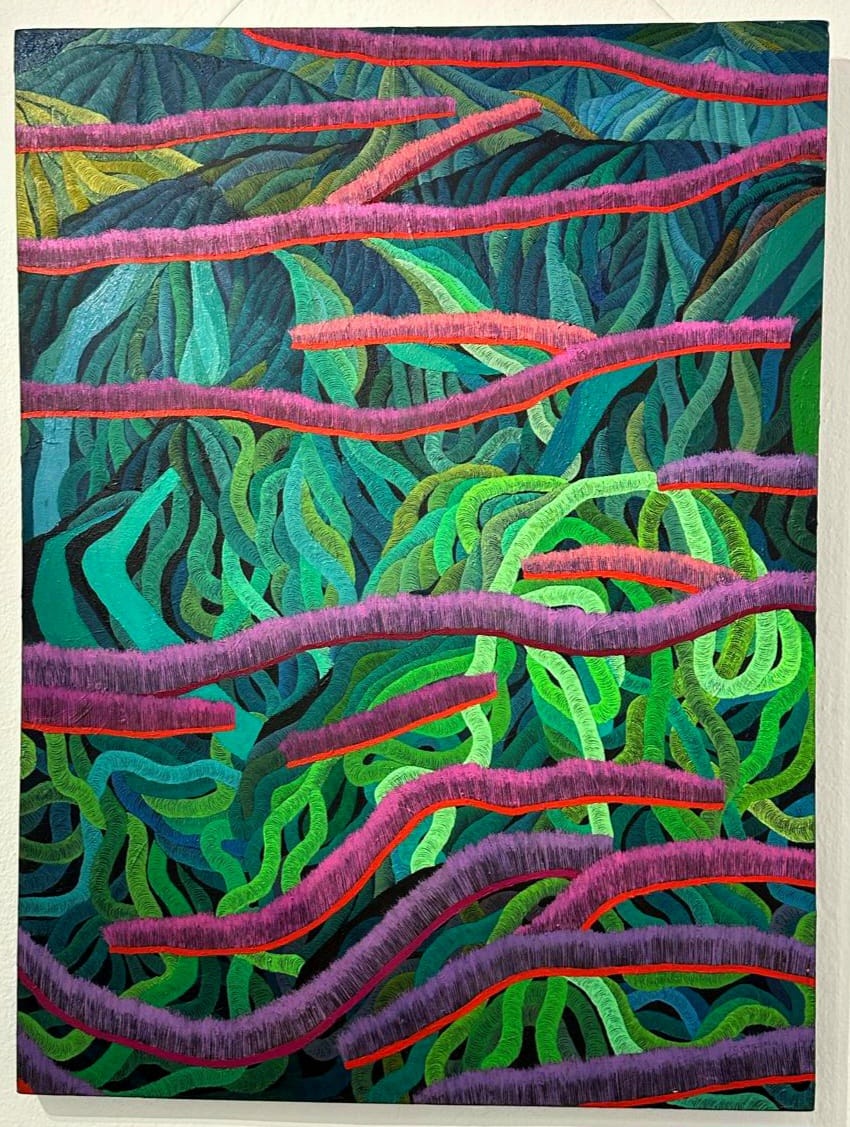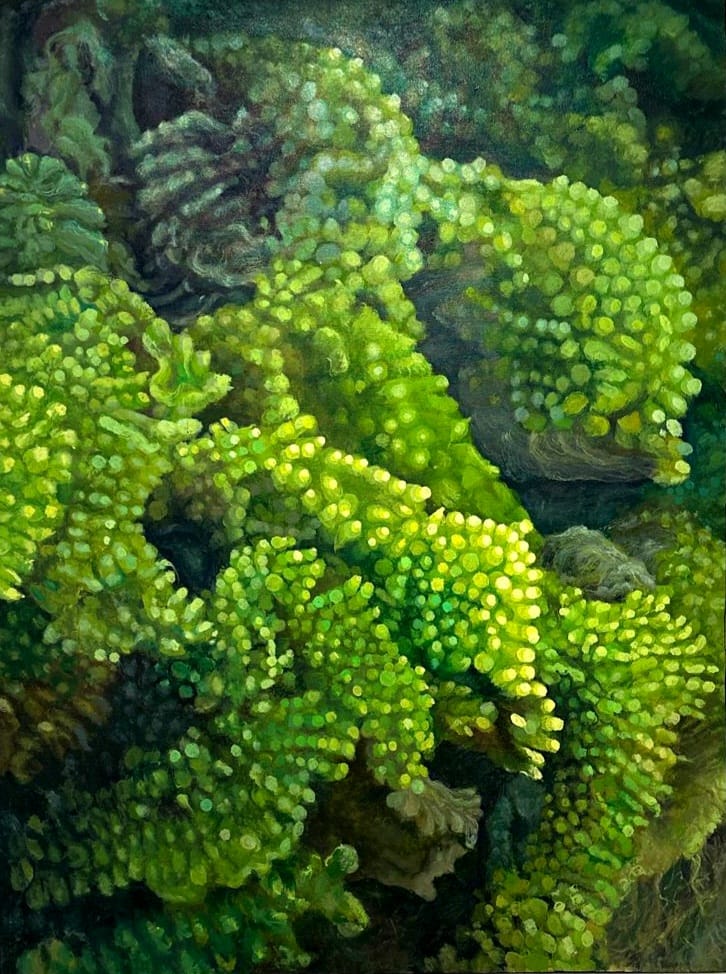Culture & Lifestyle
Landscapes of memory and loss
In ‘Between the Earth and Ether’, dreamlike pieces explore nature, migration, and the fragile ties that bind us to the land.
Pinak Shrestha
Entering ‘Between the Earth and Ether’—Siddhartha Art Gallery’s newest exhibition—feels like stepping into a forest far from the city’s noise, a place both luminous and expansive. The show draws us away from the pace of modern life and brings us back to the soil, fields, and skies—the elements that sustain us. Binod Limbu’s canvases hover between dream and memory: The Himalayan landscapes look monumental against the clear, cloudless skies and take on a sculptural dimension. Twisted rope-like forms come together to give his mountains a sculptural presence—the colours he employs embody the very essence of the barren Mustang landscape. They aren’t just depictions of nature, but living spaces that carry the breath of Nepal. These are not simple depictions of nature, but spaces that carry the breath of Nepal’s highlands—terrains that hold both the essence of survival and cultural memory.
Limbu’s own relationship with the land is one of both closeness and distance. He grew up in Damak, Jhapa, a region of fertile farmlands and diverse communities, yet he once admitted that he knew very little about farming. In his paintings, I sense both a deep admiration for nature and a quiet distance from it. The works feel vast yet oddly familiar, tropical but slightly strange—beautiful, though never fully within reach. They remind me of how easily we drift away from the very roots that hold us.
The exhibit begins with the oil painting ‘Tiger Grass I’, which is known in Nepal as Khar. At first, it shows a familiar landscape—tall grass, rice fields, and a river in the distance. But the pink and purple tones transform it into something dreamlike, neither fully real nor imagined. Limbu describes it as a vision of life’s cycle—balanced, calm, and complete. The work recalls Monet’s ‘Water Lilies’, not in how it looks, but in how it turns colour and texture into a quiet, meditative space.

Across the canvases, delicate details anchor these dreamscapes in lived reality. In several works, Limbu paints the byaad—seed beds prepared for rice planting—small, ordered patches of green that break through the vastness of the landscape. These humble seed beds create fragile, intricate patterns, almost like something out of a Studio Ghibli film, where everyday labour turns into quiet magic. They allude to the patience and care that farming demands, a reminder of how tending to the land once nourished us.
In ‘Pine Forest I & II’, trees fold and blur into one another. Within the layers, Limbu has painted a salla (pine) tree, a species that grows to its fullest where the land is undisturbed. The detail is subtle, yet meaningful: just as the salla chooses clean soil, people, too, search for the places where they can thrive.
One of the most striking works is ‘From the Mountain to the Fertile Fields (Pahad ra Kheti)’. At first, it looks like an abstract play of greens, almost like a thread, broken by a sharp pink line. But the artist explains it represents migration: the movement of people away from the mountains and fields, from farming life and into cities. The pink streaks are also suggestive of tiger grass—a quiet sign of how agriculture is disappearing, and with it, a loss of connection to the land. The painting shifts from peaceful to mournful, echoing stories of displacement, where distance erodes memory and belonging. Limbu’s work carries this double weight—beautiful at first sight, but layered with truth. Even the modest ‘Moss’ carries meaning. It depicts wall-screw moss, a plant that grows everywhere, resilient and unassuming. For Limbu, it stands as a symbol of persistence and renewal.

All the works in ‘Between the Earth and Ether’ are framed in green with touches of pastel, binding the collection in tone and theme. Together, they form a meditation on nature, migration, and survival anchored in the earth yet always reaching toward the sky. The paintings remind us that we are not separate from these landscapes, but bound to them, to the soil that roots us and the ether that expands above us. Limbu’s art invites us not only to look, but to step inside, to breathe, and to remember. Between beauty and loss, it suggests that growth is still possible, that our roots matter, and that the earth continues to hold us even as we drift into the vastness of the sky.
Between the Earth and Ether
Where: Siddhartha Art Gallery, Babermahal Revisited
When: Until September 10
Time: Sunday to Friday, 11:00 am to 5:00 pm, Saturday 12:00 pm to 5:00 pm
Entry: Free




 9.59°C Kathmandu
9.59°C Kathmandu















